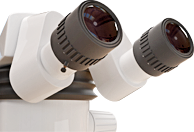Unknown Chemical Waste Analysis

The laboratory can analyse unknown chemicals and waste to assess hazards and help direct disposal or look for specific chemicals in a waste process.
A revision of both the Hazardous Waste and Landfill Regulations in 2005 has resulted in stricter controls being applied to waste disposal.
Waste can generally be split into two categories:
- Hazardous (formerly “special waste”)
- Non – Hazardous
The practice of co-disposal (mixing of hazardous with non-hazardous waste) is now banned.
Specific and exacting tests can be applied to assist a waste producer in defining whether or not their waste is Hazardous or Non-hazardous. This can be achieved by utilising a number of complimentary analytical techniques. The quantity of leachable hazardous components may be required.
- For example X-Ray Fluorescence along with semi-quantitative software capabilities can quickly give a good estimate for general characterisation. XRF analysis is ideal for identifying any significant levels of metallic contaminants present in your waste. This is an appropriate starting point when considering disposal options.
There are several elements whose levels need to be monitored:
- Arsenic (As)
- Barium (Ba)
- Cadmium (Cd)
- Chromium (Cr)
- Lead (Pb)
- Mercury (Hg)
- Molybdenum (Mo)
- Selenium (Se)
WAC Testing (Waste Acceptance Criteria) BSEN12457
WAC Testing on common waste is not carried out by the laboratory, as other companies specialise these sort of routine tests, except lead in paint which LPD Lab Services perform and have on the UKAS scope of Accreditation.
WAC testing was introduced to supplement the revised changes to the Hazardous Waste and Landfill regulations in 2005. WAC is primarily a compliance test (PASS/FAIL) against regulatory limit values.
The test involves applying an acceptance leaching test, which requires the taking of a representative sample of waste and subjecting it to leaching in water under specific test conditions.
Additional tests may also be carried out e.g.; Acid Neutralisation Capacity (ANC). This test requires waste to be chemically treated by pH variation to assess stability.
Leaching potential under “worst case scenario” conditions is more relevant than assessing “total” lead content with respect to assessing any risk to the surrounding aqueous environment. This is an extremely important factor when considering landfill as the preferred disposal route.
For lead in paint testing or unknown chemical waste analysis please contact us to discuss your needs in detail, and we will be happy to issue a no-obligation quotation.
Application Notes
| Document Title | View |
| Environmental Monitoring of Industrial Waste waters and Effluent Discharges | |
| Waste Characterisation, Unknown Chemical Contamination and Lead in Paint Analysis |

